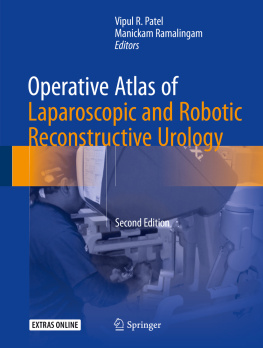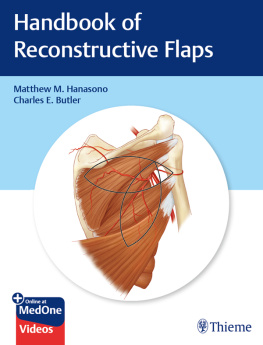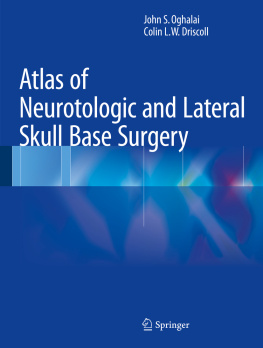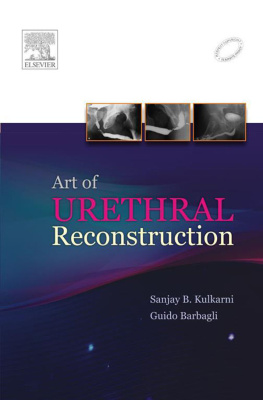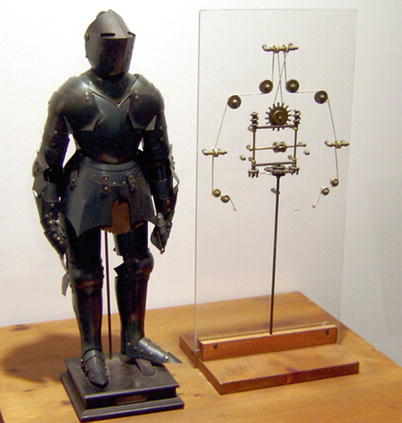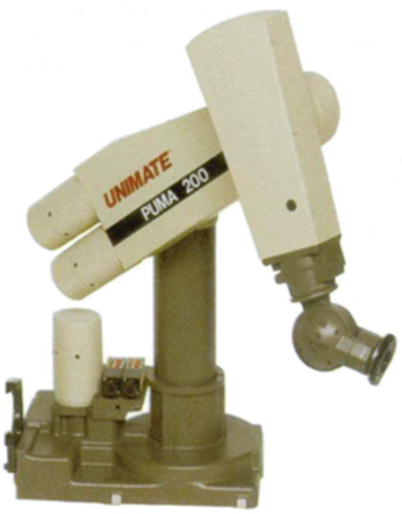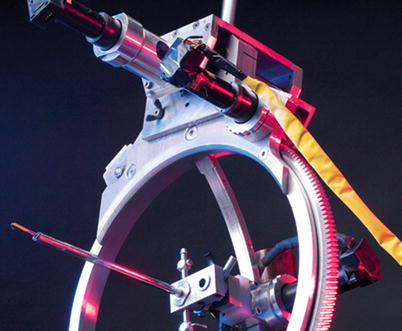1.1 Introduction
The evolution of robots in surgical practice is an intriguing story that spans cultures, continents and centuries. The idea of reproducing himself with the use of a mechanical robot has been in mans imagination in the last 3000 years. However, the use of robots in medicine has only 30 years of history. Surgery has traditionally required larger incisions to allow the surgeon to introduce his hands into the body and to allow sufficient light to see the structures being operated on. Surgeon directly touched and felt the tissues and moved the tip of the instruments. However, innovations have radically changed the performance of surgical procedures in operating room by digitization, miniaturization, improved optics, novel imaging techniques, and computerized information systems. These surgical procedures can be done by manipulating instruments from outside the patient, by looking at displays of direct electronic images of the target organs on the monitor. The robot completes the transition to the Information Age. The surgeon is immersed in this computer-generated environment (called virtual reality, term coined by Jaron Lanier, 1986) and sends electronic signals from the joysticks of the console to the tip of the instruments, which mimic the surgeons hand movements [].
This chapter highlights the history of the robotic surgical platform, the current place of robot assisted surgery and the future emerging trends in robotic surgery.
1.2 History of Robotics
The first automated machine was built probably in 1300 BCE, when Amenhotep erected the statue of King Memnon, which emitted sound when sunlight fell on it at dawn []. King-shu Tse (500 BCE) in China designed a flying magpie and a wooden horse that can jump. In 400 BCE, Archytas of Tarentum in Greece, the father of mechanical engineering, designed a wooden bird which was propelled by steam. The philosophy of automation was first expounded by Aristotle in the fourth century BCE. Archimedes (287212 BC) invented many mechanical systems that are used in robotics today. Automatons were described in Alexandria, Roman province of Ptolemaic Egypt. Ctesibius of Alexandria (250 BC) designed the clepsydra an accurate continuously working water-clock with moveable figures on it. Heron of Alexandria (1070 AD) made several automatans, including animated statues.
In 1901, between the islands of Crete and Kythera, a diver found the remnants of The Antikythera Device, a mechanical computer which most likely calculated the position of the sun, moon or other celestial bodies. It dates back 2000 years and is considered to be of Greek origin. Medieval times featured the era of Automatons, moving human-like figures run by hidden mechanisms. The clock jack was a mechanical figure that could strike time on a bell with its axe.
In 1495, Leonardo da Vinci, the genius Italian sculptor, painter, architect, engineer, anatomist and mathematician designed the first humanoid robot (Fig. ]. In 1645, Blaise Pascal invented a calculating machine, the Pascaline, one of it is in display in the Des Arts et Metiers Museum in Paris.
Fig. 1.1
Humanoid automaton, designed by Leonardo da Vinci, it is believed to be able to perform several human-like motions
In the eighteenth century, miniature automatons became popular as toys that can move like humans or small animals. John Brainerd created the Steam Man used to pull wheeled carts in 1865 and its electric vision the Electric Man was built by Frank Reade Jr in 1885. The Industrial Revolution of the late eighteenth century led to the development of complex mechanics and electricity that paved the way for robotic advancement and its application in surgery.
1.3 Evolution of Surgical Robot
The term robot was first used in a play called R.U.R. or Rossums Universal Robots (from Czech robota meaning forced work) by the Czech writer Karel Capek in 1921 []. As a result, Engelberger has been called the father of robotics. These successful experiments were determining factors for the introduction of robotics in all other industrial areas around the world. Hence, the labor intensive or dangerous tasks, especially those that required high precision were performed by the industrial robot.
1.3.1 Pre-programmable Robot
In 1978 Victor Scheinman developed the Programmable Universal Manipulation Arm (PUMA Fig. ), and in urological procedures by UROBOT. These robots had to be preprogrammed based on the fixed anatomic landmarks of each patient.
Fig. 1.2
Unimate PUMA 200 first robot used in a surgical intervention during a stereotactic brain biopsy
Fig. 1.3
The PROBOT was able to performed precise and repetitive cone shaped cuts of the prostate following an pre-establish plan
1.3.2 Robotic Telesurgery
The United States mission to put man on Mars led NASAs Ames Research Center to develop research projects to perform long-distance surgeries in astronauts. Michael McGreevey, Stephen Ellis, and Scott Fischer developed a head-mounted display (HMD) that consisted of tiny television monitors attached to a helmet immersed in a three-dimensional (3D) environment. HMD combined with data gloves, created by Jaron Lanier, allowed the user to interact with the virtual world. The computer scientist, Scott Fischer, and the plastic surgeon, Joseph Rosen, produced the first idea of telepresence surgery to perform remote surgeries in space. They achieved it by combining SRI telemanipulator with the HMD and data glove. The telepresence surgery was not technically feasible. The HMD was replaced with monitors and the data gloves with handles for controllers at the surgeons console.
The US military assigned Richard Satava to be program manager for Advanced Biomedical Technologies of the government-run Defense Advanced Research Projects Agency (DARPA). Philip Green, at the Stanford Research Institute (SRI), and the military surgeon Richard Satava joined and developed an operating system for instrument telemanipulation, the Satava and Green Telepresence system with the goal of improving surgical capabilities on the battlefield. DARPA provided grant for the development of a robotic system the Bradley 557A that could virtually take the surgeon to the front lines to provide medical assistance to wounded soldiers in the battlefield. A pivotal point for the Green Telepresence Surgery System came in 1994 when Jon Bowersox, the medical scientist for the program, performed an intestinal anastomosis on ex-vivo porcine intestine using a wireless microwave connection [].

